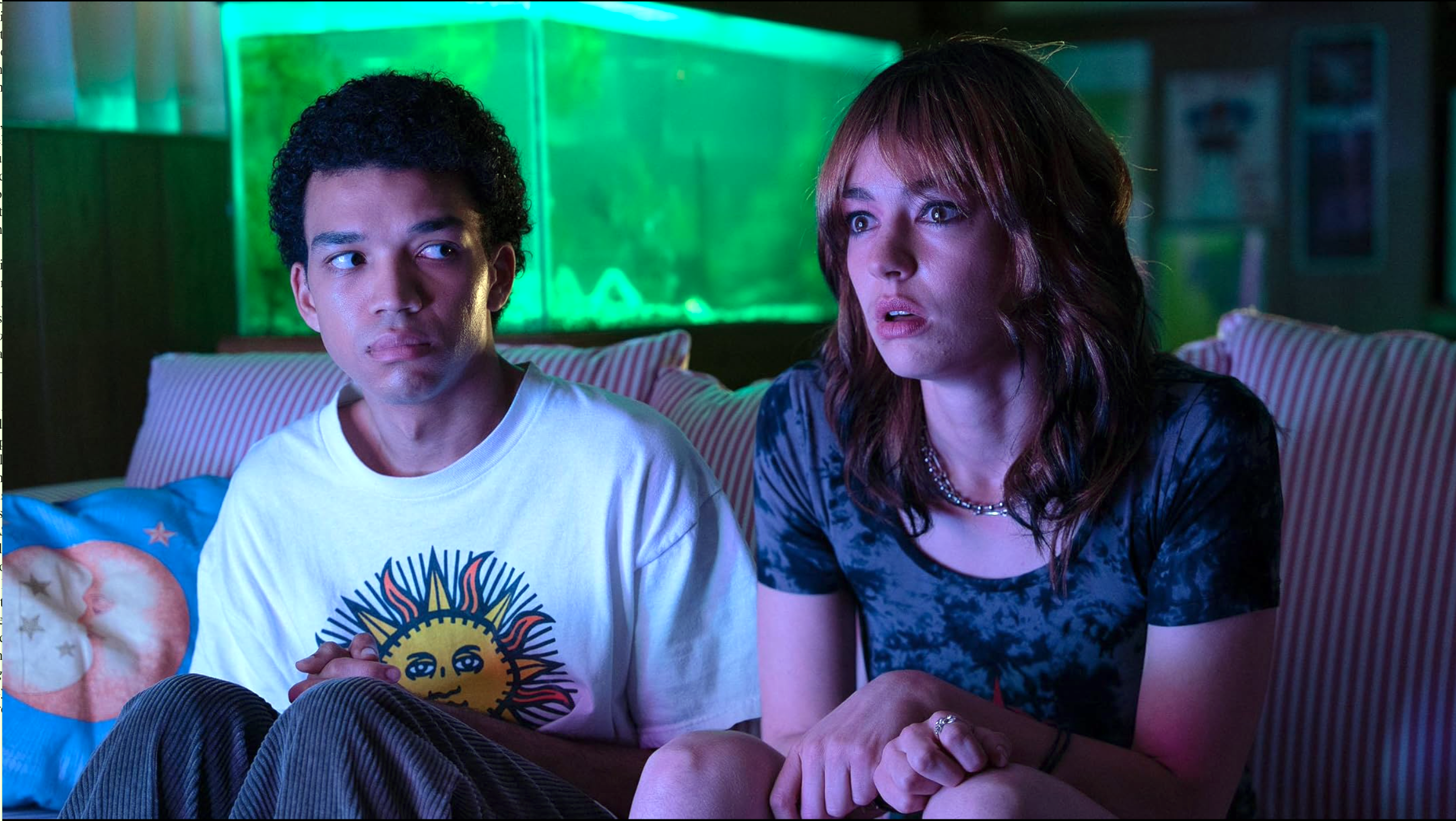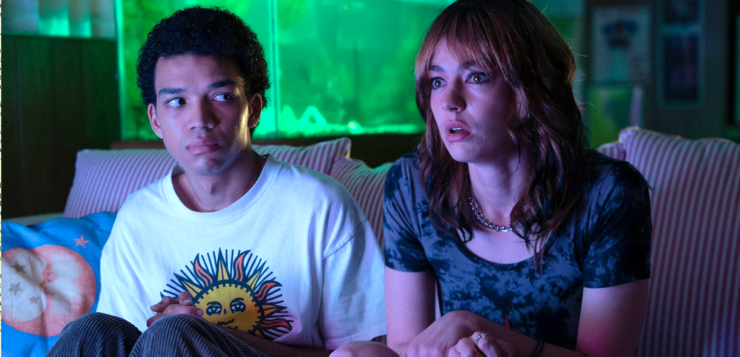I SAW THE TV GLOW
Directed by Jane Schoenbrun
A24 Films
TRANS AND NONBINARY director Jane Schoenbrun’s new film, I Saw the TV Glow, is a disturbing and powerful meditation on queer identity and popular culture. On election night 1996, seventh-grade student Owen (Ian Foreman) goes to the local suburban high school with his mother to vote. While his mother mingles with neighbors, Owen meets ninth-grader Maddy (Brigette Lundy-Paine), who’s reading an episode guide to The Pink Opaque, a horror-themed TV show aimed at teens. Maddy explains that the show is about two teenage girls, Tara and Isabel, who met one summer at sleepaway camp and became psychically linked. Now, they use their special powers each week to defeat an assortment of supernatural foes. Although she says it’s “way too scary for most kids,” The Pink Opaque is Maddy’s favorite show. It airs on Saturday nights after Owen’s bedtime, but he lies to his parents about having a sleepover at a friend’s house so he can sneak over to Maddy’s to watch it.

After five seasons, The Pink Opaque is canceled. Maddy tells Owen she’s leaving town (and her abusive stepfather) and invites him to join her. Afraid of making such a drastic change, he stays in town, but Maddy vanishes, leaving behind only a burning TV set. Several years later, Owen, now a listless adult working at a movie theater, meets Maddy again late one night at the supermarket.
She tells him something shocking. The Pink Opaque is real, and their suburban hometown is not—it’s actually a false world created by the show’s archvillain, Mr. Melancholy. Maddy claims that she is really the demonologist Tara, but had forgotten due to Melancholy’s magic, and that Owen is Isabel. She tells Owen he can be reborn into his true identity as Isabel, but only if he’s willing to make a frightening sacrifice.
Schoenbrun’s previous feature film, We’re All Going to the World’s Fair (2021), dealt with Casey, a lonely high school girl participating in an online occult game that promises (or threatens) to change its players physically and mentally. I Saw the TV Glow expands on that film’s ideas, examining how popular culture can both help and hinder us in finding our true identities, but it also places the earlier film’s subtle themes about body dysmorphia into a more explicitly transgender context. Schoenbrun has said in interviews that I Saw the TV Glow is about the “egg crack,” that moment when a person suddenly realizes that they are transgender, and Owen’s dilemma is the emotional core of the movie. Will he do what is necessary to escape the false world and become Isabel? Or is Maddy delusional, dangerously insane, and trying to kill him?
I Saw the TV Glow incorporates many horror movie tropes, like creepy monsters and supernatural happenings, but it’s really about the horror of repression. It was one of the most unsettling and emotionally devastating films I’ve seen in a long time, and I found myself thinking about it for weeks afterwards. It’s a film that will resonate with anyone who has had to repress themselves, particularly members of the queer community.
Included in the film are numerous references to 1990s popular culture—The Adventures of Pete and Pete, Buffy the Vampire Slayer, the Cocteau Twins—but Schoenbrun isn’t including these nods purely for their nostalgia value. Late in the film, one of the characters, no longer a teenager but now a middle-aged adult, watches episodes of The Pink Opaque on a streaming service and wonders why they were obsessed with it. They realize the monster costumes were cheap and unconvincing, the leads were children who could barely act, and the show was terribly written. So how could it have been so important to them? Nostalgia can be fun, but TV shows, rock stars, and old movies don’t have any intrinsic power of their own, only what we give them. The Pink Opaque might help Owen realize he’s really Isabel, but only he can make the choice to actually become her.






